The
more one knows about the unique characteristics of wood and its
source, the better one can understand the degree of warmth and
beauty that it brings to our everyday décor. Furniture
made of wood is one of the few things in the world that all people
can own and know that they are the only person in the world who
owns that particular grain pattern and its inherent beauty. Each
grain pattern is a unique masterpiece of design, texture and splendor.
Even what some may view as a defect, like a knot or other natural
blemishes, can add more beauty and character to any given piece
of furniture.
The
classification of wood has historically always been either hard
wood; any leaf bearing tree, and soft wood; any cone bearing tree.
These terms can be confusing since some leaf bearing trees can
have very soft wood and some coniferous trees can have very hard
woods. To make this easier, below you will find a list of different
tree types, classification and then individual wood characteristics.
There
are two basic wood grades. Select lumber is excellent quality
for use when appearance and finishing are important and common
lumber that has defects used for construction and general-purpose
projects. The grades of the select lumber are: B and Better grade,
which has minute or no blemishes; C Select grade which has some
minor defects such as small knots; D select grade that has larger
imperfections, which can be concealed by paint. The grades of
common lumber are No. 1 grade containing tight knots and few blemishes.
No. 2 grade that has more and larger knots and blemishes. No.
3 grade that has loose knots, knotholes, and other flaws. No.
4 grade that is low quality and No. 5 grade where the appearance
is not important.
|
HARDWOODS
|
|
OAK:
Oak
is the most widely used hardwood. There are more than 60 species
of oak grown in the U.S., which can be separated into two basic
varieties; white and red. The red variety is also known as black
oak (a reference to its bark).
Properties:
Oak is a heavy, strong, light colored hardwood. It is ring porous,
due to the fact that more and larger conductive vessels are laid
down early in the summer, rather than later. Prominent rings and
large pores give oak a course texture and prominent grain. Oak
also has conspicuous medullary rays which can be seen as "flakes"
in quarter sawed oak lumber.
Uses:
Oak is the most popular wood used to craft American and English
country designs. It is also used for Gothic and William &
Mary reproductions, as well as many transitional and contemporary
pieces.
|
 |
MAPLE:
There
are 115 species of maple. Only 5 commercially important species
grow in the U.S. Two of the five are hard rock maple and sugar
maple.
Properties:
Maple is so hard and resistant to shocks that it is often used
for bowling alley floors. Its diffuse evenly sized pores give
the wood a fine texture and even grain. Maple that has a curly
grain is often used for violin backs (the pattern formed is known
as fiddleback figure). Burls, leaf figure, and birds-eye figures
found in maple are used extensively for veneers. The Birds eye
figure in maple is said to be the result of stunted growth and
is quite rare.
Uses:
Maple is used extensively for American colonial furniture, especially
in medium and lower priced categories. It can also be stained
to simulate cherry wood, which it resembles.
|
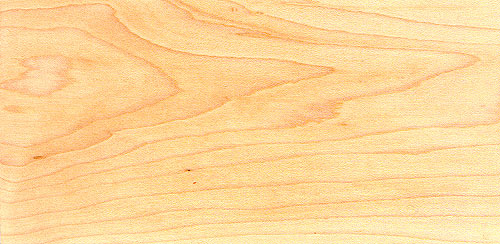 |
MAHOGANY:
Mahogany,
also known as Honduras mahogany is a tropical hardwood indigenous
to South America, Central America and Africa. There are many different
grades and species sold under this name, which vary widely in
quality and price. Mahogany which comes from the Caribbean is
thought to be the hardest, strongest and best quality. Logs from
Africa, though highly figured, are of slightly lesser quality.
Philippine mahogany has a similar color, but is not really mahogany
at all. It is a much less valuable wood, being less strong, not
as durable or as beautiful when finished.
Properties:
Mahogany is strong, with a uniform pore structure and poorly defined
annual rings. It has a reddish - brown color and may display stripe,
ribbon, broken stripe, rope, ripple, mottle, fiddleback or blister
figures. Crotch mahogany figures are widely used and greatly valued.
Mahogany is an excellent carving wood and finishes well.
Uses:
Mahogany is used extensively in the crafting of Georgian, Empire
and Federal reproduction furniture. Mahogany is also used in styles
ranging from Victorian furniture reproductions to Contemporary.
|
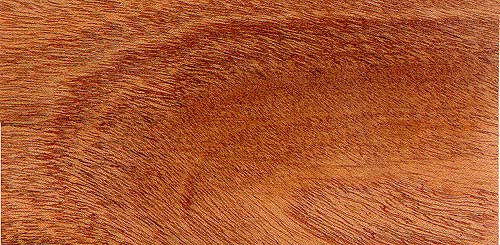 |
CHERRY:
Cherry
is grown in the Eastern half of the U.S.. It is sometimes called
fruitwood. The term fruitwood is also used to describe a light
brown finish on other woods.
Properties:
A moderately hard, strong, closed grain, light to red-brown wood,
cherry resists warping and checking. It is easy to carve and polish.
Uses:
Cherry veneers and solids are used in a variety of styles. Cherry
has been called New England mahogany and is often used to craft
18th century, Colonial and French Provincial designs.
|
 |
WALNUT:
Walnut is one of the most
versatile and popular cabinet making woods. It grows in Europe,
America and Asia. There are many different varieties.
Properties:
Walnut is strong, hard and durable, without being excessively
heavy. It has excellent woodworking qualities, and takes finishes
well. The wood is light to dark chocolate brown in color with
a straight grain in the trunk. Wavy grain is present toward the
roots, and walnut stumps are often dug out and used as a source
of highly figured veneer. Large burls are common. Walnut solids
and veneers show a wide range of figures, including strips, burls,
mottles, crotches, curls and butts. European walnut is lighter
in color and slightly finer in texture than American black walnut,
but otherwise comparable.
Uses:
Walnut is used in all types of fine cabinet work, especially 1
8th century reproductions.
|
 |
ROSEWOOD:
Very hard and has a dark reddish brown color. It is fragrant and
close grained. It is hard to work and takes high polish. Used
in musical instruments, piano cases, tool handles, art projects,
veneers and furniture.
|
 |
TEAK:
True teak is indigenous to Southeast Asia, but similar wood species
also grow in Africa.
Properties
& Uses: Teak is a yellow to dark brown hardwood which is extremely
heavy, strong and durable. Often strongly figured, teak may show
straight grain, mottled or fiddleback figures. It carves well,
but because of its high value, is often used as a veneer. Scandinavian
modern, and oriental furniture styles are often crafted of teak.
|
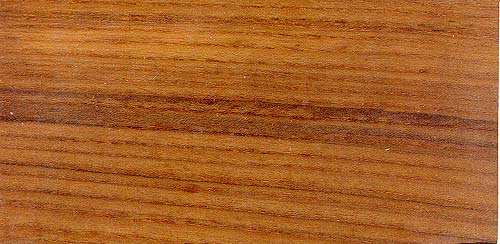 |
|
|
SOFTWOODS
|
|
PINE:
Pine is a softwood which grows in most areas of
the Northern Hemisphere. There are more than 100 species worldwide.
Properties:
Pine is a soft, white or pale yellow wood which is light weight,
straight grained and lacks figure. It resists shrinking and swelling.
Knotty pine is often used for decorative effect.
Uses:
Pine is often used for country or provincial furniture. Pickled,
whitened, painted and oil finishes are often used on this wood.
|
 |
ASH:
There are 16 species of ash which grow in the eastern United States.
Of these, the white ash is the largest and most commercially important.
Properties:
Ash is a hard, heavy, ring porous hardwood. It has a prominent
grain that resembles oak, and a white to light brown color. Ash
can be differentiated from hickory (pecan) which it also resembles,
by white dots in the darker summerwood which can be seen with
the naked eye. Ash burls have a twisted, interwoven figure.
Uses:
Ash is widely used for structural frames and steam bent furniture
pieces. It is often less expensive than comparable hardwoods.
|
 |
HICKORY:
There are 15 species of
hickory in the eastern United States, eight of which are commercially
important.
Properties:
Hickory is one of the heaviest and hardest woods available. Pecan
is a species of hickory sometimes used in furniture. It has a
close grain without much figure.
Uses:
Wood from the hickory is used for structural parts, especially
where strength and thinness are required. Decorative hickory veneers
are also commonly used.
|
|
BEECH:
The American beech is a single species which grows
in the eastern half of the United States.
Properties
& Uses: Beech is a hard, strong, heavy wood with tiny pores
and large conspicuous medullary rays, similar in appearance to
maple. This relatively inexpensive wood has reddish brown heartwood
and light sapwood. Beech is often used for frames, a variety of
bent and turned parts. Quarter sliced and half round cut beech
veneers are commonly used.
|
|
BIRCH:
There are many species of birch. The yellow birch is the most
commercially important. European birch is fine grained, rare and
expensive.
Properties
& Uses: Birch is a hard, heavy, close grained hardwood with
a light brown or reddish colored heartwood and cream or light
sapwood. Birch is often rotary or flat sliced, yielding straight,
curly or wavy grain patterns. It can be stained to resemble mahogany
or walnut.
|
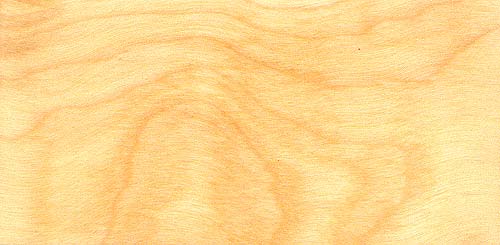 |
CEDAR:
Several species of cedar
grow in the southern United States, Central and South America.
Properties
& Uses: Cedar is a knotty softwood which has a red-brown color
with light streaks. Its aromatic and moth repellent qualities
have made it a popular wood for lining drawers, chests and boxes.
Simple cases and storage closets are also constructed from this
light, brittle wood.
|
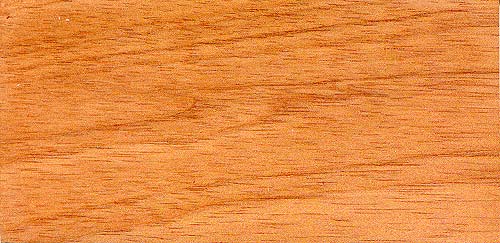 |
REDWOOD:
Indigenous
to the Pacific United States, redwood trees grow to more than
300 feet tall and 2,500 years old.
Properties
& Uses: The best quality redwood comes from the heartwood
which is resistant to deterioration due to sunlight, moisture
and insects. It is used to craft outdoor furniture and decorative
carvings. Redwood burls have a "cluster of eyes" figure.
They are rare and valuable.
|
|
HEMLOCK:
Light in weight, uniformly
textured. It machines well and has low resistance to decay and
nonresinous. Used for construction lumber, planks, doors, boards,
paneling, sub flooring and crates.
|
|
FIR:
Works
easy and finishes well. Uniform in texture and nonresinous. Has
low resistance to decay. Used in furniture, doors, frames, windows,
plywood, veneer, general millwork and interior trim.
|
|
SPRUCE:
Strong
and hard. Finishes well and has low resistance to decay. Has moderate
shrinkage and light in weight. Used for masts and spars for ships,
aircraft, crates, boxes, general millwork and ladders.
|
|
|
|
|
|
|










